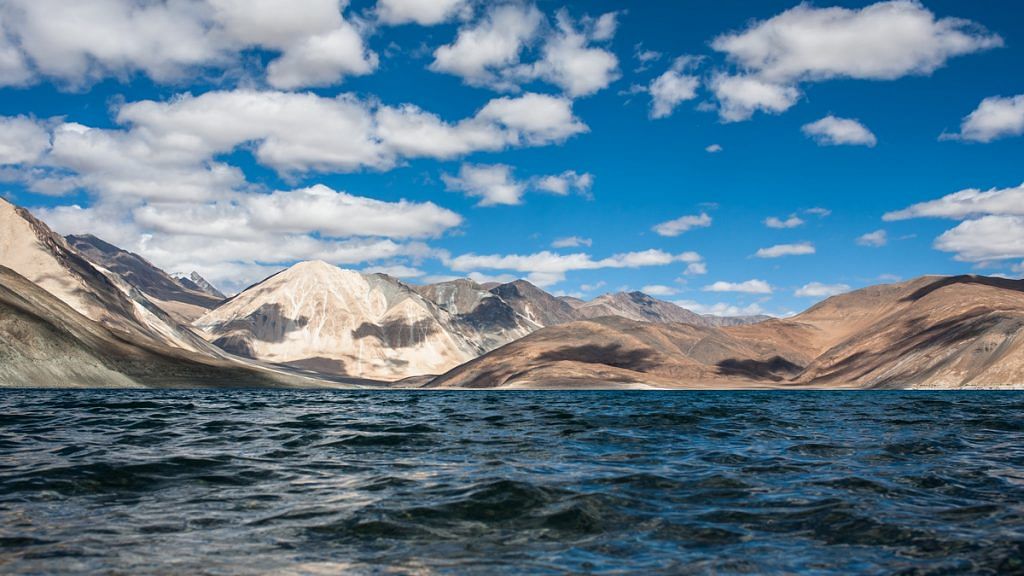New Delhi: The Chinese troops have “come in” about 3 km into Indian territory South East of the Galwan Valley, largely known as Hot Springs area in eastern Ladakh.
Sources in the know told ThePrint that Beijing has also moved in men at the “finger areas” of Pangong Lake while increasing build up on its side of the Line of Actual Control (LAC). The Pangong Lake’s northern bank juts forward like a palm, and the various protrusions are identified as “fingers” to demarcate territory.
Sources said that contrary to inputs of a large Chinese troop presence at Galwan Valley, the build-up is within the Chinese Claim Line (CCL), which is also considered as the LAC at local level.
Sources say that in Galwan, the CCL and the LAC are the same though no maps have been exchanged. They said that the understanding is at local level and Chinese objections to construction activities well within Indian territory was a surprise.
India has done “mirror deployment” on its side, in that it has matched every Chinese move.
However, the Chinese have come in near Patrol Point 14, 15 and the Gogra Post, which is 80 km South East of Galwan Valley, as crow flies, and is between the valley and Pangong Lake.
Sources told ThePrint that the Chinese have not crossed their CCL in these areas but they did accept that these areas are about 3 km within India’s perception of the LAC.
Also read: Army aims for more local production of specialised ammunition as it works on import ban list
‘No maps in the area’
The patrol points in these areas are named by numbers and Indian troops, a mix of Army and the ITBP personnel, patrol these points from time to time.
“No maps have been exchanged in this area between India and China demarcating what is the LAC,” a source explained. “Whatever understanding that is there is between the two Army at local level.”
Sources also underlined that there has not been any build-up in these areas besides the ones done earlier this month.
As reported by ThePrint, Chinese have brought in a large number of Border Defence Regiment (BDR) troops at various positions along the LAC. About 1,200-1,300 troops have come in at multiple locations even though the figures have varied.
ThePrint had also reported that Indian soldiers kept in reserve areas are being used to match up and reserves are being filled in. Sources said that India too has moved troops in these areas along with logistics set up which includes tents.
Acclimatisation is essential for deployment in these areas, which are above 14,000 feet.
Finger area domination is worrisome
While India asserts that the LAC starts at Finger 8, the Chinese claim it starts at Finger 2.
During the Kargil battle when troops were diverted from the area to fight Pakistan, China had stepped in and built a motorable road at Finger 4.
Sources said India, which “dominates” Finger 2, has been trying to construct a road further over the past few years that would have provided soldiers with the capability to move in vehicles and faster.
“The Chinese have built roads. So let us say that while Chinese troops would take about 15 minutes to reach a point, we would take about two and half hours. The road construction was happening between Finger 2-3,” a source said.
Following the clash on 5 February, the Chinese have moved in larger numbers of soldiers and vehicles to cut off Indian patrol capability.
While India claims the LAC is at Finger 8, the patrol used to take place up until about Finger 5 and anything beyond was always challenged.
Sources said that the importance of the finger area to the Chinese is that if they come west of Finger 4, they will have direct observation of Lukung, where Indian patrol boats are kept.
Moreover, they will be able to observe all of India’s movement in the Northern Bank and towards Marsmikla among others.
Also read: Army not naming terrorists killed in encounters is a step back on its transparent culture
